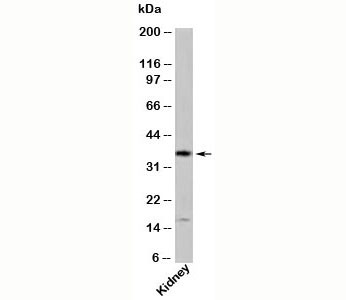Cookie preferences
This website uses cookies, which are necessary for the technical operation of the website and are always set. Other cookies, which increase the comfort when using this website, are used for direct advertising or to facilitate interaction with other websites and social networks, are only set with your consent.
Configuration
Technically required
These cookies are necessary for the basic functions of the shop.
"Allow all cookies" cookie
"Decline all cookies" cookie
CSRF token
Cookie preferences
Currency change
Customer-specific caching
FACT-Finder tracking
Individual prices
Selected shop
Session
Comfort functions
These cookies are used to make the shopping experience even more appealing, for example for the recognition of the visitor.
Note
Show the facebook fanpage in the right blod sidebar
Statistics & Tracking
Affiliate program
Conversion and usertracking via Google Tag Manager
Track device being used

| Item number | Size | Datasheet | Manual | SDS | Delivery time | Quantity | Price |
|---|---|---|---|---|---|---|---|
| NSJ-N1215-25UG | 25 µg | - | - |
3 - 10 business days* |
317.00€
|
||
| NSJ-N1215-100UG | 100 µg | - | - |
3 - 10 business days* |
622.00€
|
If you have any questions, please use our Contact Form.
You can also order by e-mail: info@biomol.com
Larger quantity required? Request bulk
You can also order by e-mail: info@biomol.com
Larger quantity required? Request bulk
0.5 mg/ml with 0.1 mg/ml BSA (US sourced), 0.05% sodium azide. GBL (G protein beta subunit-like),... more
Product information "Anti-GBL"
0.5 mg/ml with 0.1 mg/ml BSA (US sourced), 0.05% sodium azide. GBL (G protein beta subunit-like), also called MLST8 (MTOR associated protein, LST8 homolog), is a subunit of the mTOR signaling complexes mTORC1 and mTORC2, which help regulate cell growth and survival in response to growth factor (mTORC1 & 2) and nutrient (mTORC1) signaling. It is required for the phosphorylation of S6 kinase and the signal adaptor protein Insulin receptor substrate 1 and S473 phosphorylation of AKT. GBL is also a regulator of TNFa-induced NF-kB activity, with overexpression inhibiting and down-regulation enhancing NF-kB signaling (Kim et al, 2008). Protein function: Subunit of both mTORC1 and mTORC2, which regulates cell growth and survival in response to nutrient and hormonal signals. mTORC1 is activated in response to growth factors or amino acids. Growth factor-stimulated mTORC1 activation involves a AKT1- mediated phosphorylation of TSC1-TSC2, which leads to the activation of the RHEB GTPase that potently activates the protein kinase activity of mTORC1. Amino acid-signaling to mTORC1 requires its relocalization to the lysosomes mediated by the Ragulator complex and the Rag GTPases. Activated mTORC1 up-regulates protein synthesis by phosphorylating key regulators of mRNA translation and ribosome synthesis. mTORC1 phosphorylates EIF4EBP1 and releases it from inhibiting the elongation initiation factor 4E (eiF4E). mTORC1 phosphorylates and activates S6K1 at 'Thr-389', which then promotes protein synthesis by phosphorylating PDCD4 and targeting it for degradation. Within mTORC1, LST8 interacts directly with MTOR and enhances its kinase activity. In nutrient- poor conditions, stabilizes the MTOR-RPTOR interaction and favors RPTOR-mediated inhibition of MTOR activity. mTORC2 is also activated by growth factors, but seems to be nutrient-insensitive. mTORC2 seems to function upstream of Rho GTPases to regulate the actin cytoskeleton, probably by activating one or more Rho-type guanine nucleotide exchange factors. mTORC2 promotes the serum- induced formation of stress-fibers or F-actin. mTORC2 plays a critical role in AKT1 'Ser-473' phosphorylation, which may facilitate the phosphorylation of the activation loop of AKT1 on 'Thr-308' by PDK1 which is a prerequisite for full activation. mTORC2 regulates the phosphorylation of SGK1 at 'Ser-422'. mTORC2 also modulates the phosphorylation of PRKCA on 'Ser-657'. [The UniProt Consortium]
| Keywords: | Anti-GBL, Anti-MLST8, Anti-Gable, Anti-mLST8, Anti-Protein GbetaL, Anti-TORC subunit LST8, Anti-G protein beta subunit-like, Anti-Mammalian lethal with SEC13 protein 8, Anti-Target of rapamycin complex subunit LST8, GBL Antibody |
| Supplier: | NSJ Bioreagents |
| Supplier-Nr: | N1215 |
Properties
| Application: | WB |
| Antibody Type: | Polyclonal |
| Conjugate: | No |
| Host: | Rabbit |
| Species reactivity: | human, mouse, rat |
| Immunogen: | A recombinant protein fragment from the internal region of human GBL was used as the immunogen for this antibody. |
| Format: | Purified |
Database Information
| KEGG ID : | K08266 | Matching products |
| UniProt ID : | Q9BVC4 | Matching products |
| Gene ID | GeneID 64223 | Matching products |
Handling & Safety
| Storage: | -20°C |
| Shipping: | -20°C (International: °C) |
Caution
Our products are for laboratory research use only: Not for administration to humans!
Our products are for laboratory research use only: Not for administration to humans!
Information about the product reference will follow.
more
You will get a certificate here
Viewed




